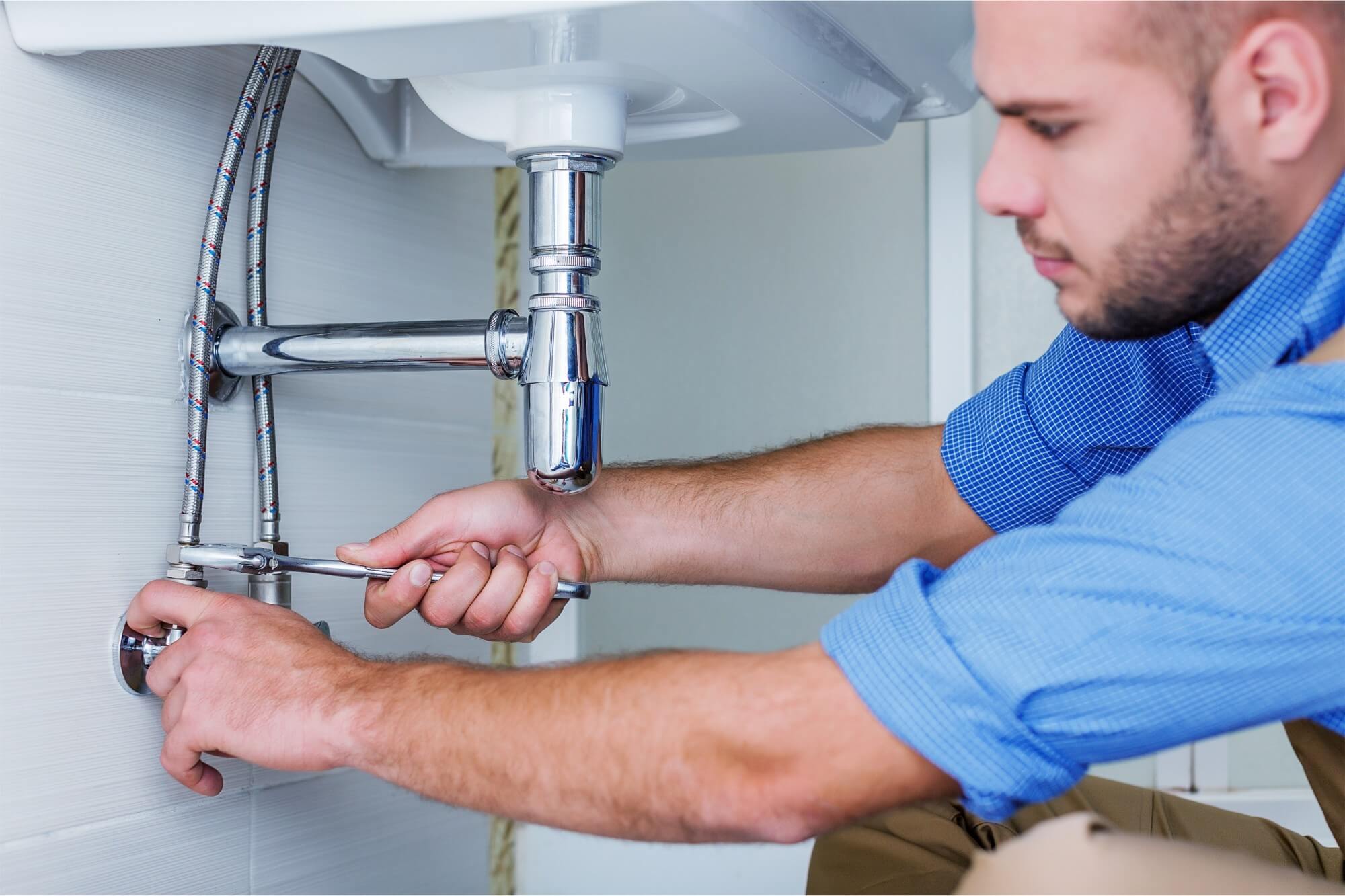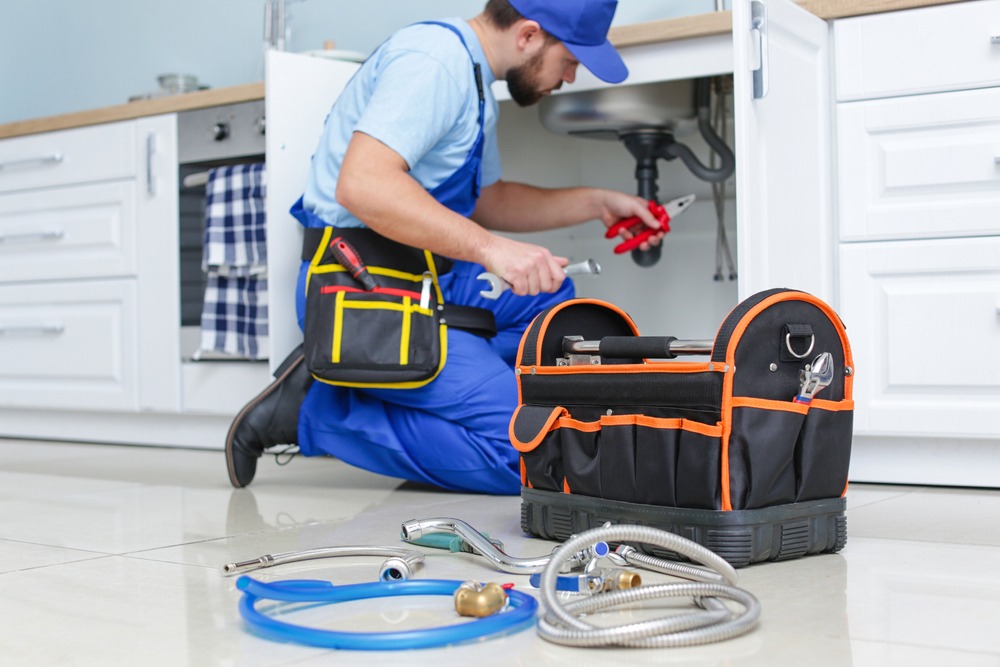A Beginner’s Guide to DIY Plumbing Repairs Without Causing Damage
A Beginner’s Guide to DIY Plumbing Repairs Without Causing Damage
Blog Article
Common Plumbing Problems Every House Owner Need To Understand
House owners often encounter a range of pipes problems that can interrupt every day life. Typical issues include leaky faucets, stopped up drains, and running bathrooms. These concerns generally stem from worn-out components or particles accumulation. Additionally, low water pressure and burst pipes can indicate much deeper problems. Comprehending these challenges is necessary for effective maintenance. However, there are various other much less obvious issues that can emerge, which require closer evaluation.
Dripping Faucets
Leaking faucets can be a frustrating hassle for house owners. These persistent trickles not only create a frustrating sound but likewise lead to squandered water and enhanced utility costs. A leaky tap frequently arises from damaged washing machines, O-rings, or seals, which deteriorate with time as a result of routine use and exposure to water. In some instances, the faucet's internal elements might be rusted or harmed, necessitating a much more considerable repair work or substitute. Identifying the source of the leakage is essential; property owners might need to dismantle the tap to examine its parts closely. Routine maintenance can help avoid leakages, consisting of cleaning aerators and checking for indicators of wear. Attending to a leaky tap without delay can conserve water and reduce expenses, making it a convenient yet essential job for home owners to tackle in maintaining their pipes systems effectively. Proper focus to this typical concern can cause an extra comfy living atmosphere.
Clogged Drains
Many property owners experience the frustration of stopped up drains pipes at some time. This common plumbing problem can develop from numerous reasons, consisting of the accumulation of hair, soap residue, food bits, and oil. These products can produce clogs that hinder the flow of water, causing slow drain or total stoppage.In kitchens, oil and food scraps are usually the perpetrators, while restrooms regularly suffer from hair and soap accumulation. Routine maintenance, such as making use of drainpipe filters and preventing putting fats down the sink, can aid avoid clogs.When a blockage does take place, home owners may try to use a bettor or a business drain cleaner as initial solutions. However, persistent problems might require specialist support to prevent damages to pipelines - Plumber. Understanding the reasons and prevention techniques for blocked drains pipes can save house owners money and time, making sure a smoother pipes experience

Running Commodes
Running commodes are a typical issue that can come from different reasons, including damaged flappers and chain problems. The continuous running not only wastes water yet also results in boosted energy expenses. Dealing with these concerns promptly can recover and protect against additional issues effectiveness to the plumbing system.
Causes of Running Bathrooms
A relentless circulation of water from a bathroom can be both wasteful and bothersome, usually signifying underlying concerns within the pipes system. One usual cause is a worn flapper shutoff, which might not produce a proper seal, permitting water to continuously leak right into the dish. Additionally, a malfunctioning fill shutoff can lead to excessive water circulation, adding to the issue. Misaligned float devices might additionally trigger the bathroom to run as they fail to manage the water level properly. An additional potential issue is mineral accumulation, which can block elements and hinder their functionality. Recognizing these reasons promptly can assist home owners deal with the trouble before it intensifies, guaranteeing effective operation of their pipes system.
Consequences of Constant Operating
Typically forgotten, the consequences of a continually running commode can substantially affect both water use and house expenditures. A running commode can waste approximately 200 gallons of water daily, resulting in increased water costs and unneeded resource usage. This extreme water use not just strains the house budget however additionally adds to ecological issues, specifically in locations dealing with water lacks. Furthermore, the consistent audio of running water can be a resource of annoyance, interrupting the serenity of the home - Plumbing. In addition, long term problems might bring about even more significant pipes issues if left unaddressed, leading to further monetary worries. House owners need to acknowledge the relevance of prompt repair work to mitigate these negative results and keep an efficient pipes system
Repairing Running Toilet Issues
Commodes that constantly run can be a discouraging issue for property owners, but identifying the cause is the initial step towards an efficient solution. Typical causes include a malfunctioning flapper, which might not develop an appropriate seal, permitting water to get away into the dish. House owners ought to check the flapper for wear and replace it if required. In addition, the fill valve might be malfunctioning, triggering excess water to move constantly. Replacing this component or adjusting might solve the problem. Another prospective offender is a misaligned float, which can be gotten used to the correct height. Routine maintenance and timely fixings can prevent running bathrooms, guaranteeing both water conservation and expense financial savings on utility costs.
Low Tide Stress
Low tide pressure can be an irritating experience for homeowners, commonly manifesting as a weak stream from taps and showerheads. This concern can stem from different causes, consisting of sediment accumulation in pipelines, corroded pipes, or issues with the municipal water system. Home owners may at first notice low tide pressure in particular locations of the home, however it can intensify to a more widespread problem otherwise addressed promptly.In some instances, malfunctioning stress regulators can additionally be accountable for insufficient water circulation. Routine maintenance, such as purging the hot water heater and looking for clogs, can assist minimize these problems. It might be needed to seek advice from a professional plumbing technician to identify and deal with the underlying reason if reduced water stress lingers. Recognizing the source of low water stress is crucial for restoring appropriate water circulation and making sure a practical plumbing system.
Ruptured Piping
Burst pipelines can be a serious pipes issue, usually arising from the exact same factors that add to low tide pressure, such as temperature variations and maturing infrastructure. When water ices up within pipes, it increases, raising pressure till the pipe can no much longer have it, resulting in a tear. Furthermore, deterioration from extended exposure to water can visit the site deteriorate pipelines, making them prone to breaking under normal pressure.Homeowners may see indications of a ruptured pipe via unexpected water leakages, damp places on wall surfaces or ceilings, and an unforeseen increase in their water expense. Immediate action is vital; stopping working to address a burst pipeline can cause considerable water damage, mold and mildew development, and costly repairs. Regular inspections and maintenance of pipes systems can help stop this concern. In addition, insulating pipes in colder locations and changing old piping can significantly lower the danger of burst pipelines, safeguarding the home's pipes stability.
Hot Water Heater Issues
How can home owners recognize hot water heater problems before they intensify? Regular inspection and maintenance can help discover possible troubles early. Property owners ought to look for signs such as irregular water temperature, unusual sounds, or a decrease in warm water supply. Leaks or pools around the device may show a malfunction that calls for prompt attention. The appearance of rust or debris build-up can likewise indicate the demand for maintenance.Additionally, homeowners ought to monitor the age of their hot water heater; most systems have a lifespan of 8 to 12 years. If the heating unit is approaching this age and revealing indicators of wear, it may be time to review substitute. Normal flushing of the container can stop sediment accumulation, prolonging the device's life. By remaining watchful and attending to concerns without delay, home owners can stay clear of expensive repairs and ensure their water heating system operates successfully for many years ahead.
Sewage System Line Issues
Many house owners may encounter sewage system line problems at some point, impacting their plumbing system's total capability. Common issues consist of clogs, tree origin intrusions, and pipeline damage. Obstructions frequently result from the build-up of oil, hair, and international things that obstruct the flow of wastewater. Tree origins can infiltrate sewer lines, triggering splits and leakages. Additionally, maturing pipelines might wear away or break, resulting in additional complications (Plumbing). Indicators of sewage system line problem include slow drains pipes, undesirable odors, and sewer back-ups, which can posture health and wellness dangers. Property owners ought to address these issues immediately to stay clear of substantial damage and pricey repairs. Routine see upkeep, such as set up assessments and cleaning, can assist prevent substantial concerns. In severe instances, expert intervention might be needed to fix or replace damaged sections of the sewage system line. Knowing these prospective troubles can help home owners take aggressive steps to preserve their pipes systems successfully
Often Asked Questions
Just How Can I Prevent Pipes Problems in My Home?
To protect against plumbing issues, regular upkeep is essential. House owners must inspect pipelines for leakages, clean drains, and monitor water pressure. Additionally, informing themselves about appropriate use can significantly reduce the danger of future pipes problems.
When Should I Call a Plumber As Opposed To Repairing It Myself?
Establishing when to call a plumbing often relies on the seriousness of the problem. Significant leaks, persistent blockages, or strange issues require specialist support, ensuring security and preventing more damage instead than risking individual efforts at repair service.
What Are the Signs of Hidden Plumbing Leaks?
Indications of hidden plumbing leaks include unusual water bills, damp spots on ceilings or walls, mold and mildew development, and a stuffy odor. These indicators commonly suggest underlying concerns that require expert evaluation and repair service for resolution.
How Often Should I Have My Plumbing Inspected?
Routine pipes inspections are suggested each to 2 years. This frequency aids recognize potential problems early, guaranteeing the system stays effective and reducing the threat of pricey repair work or unforeseen emergency situations in the future.
Are There Do It Yourself Solutions for Minor Pipes Issues?

Report this page